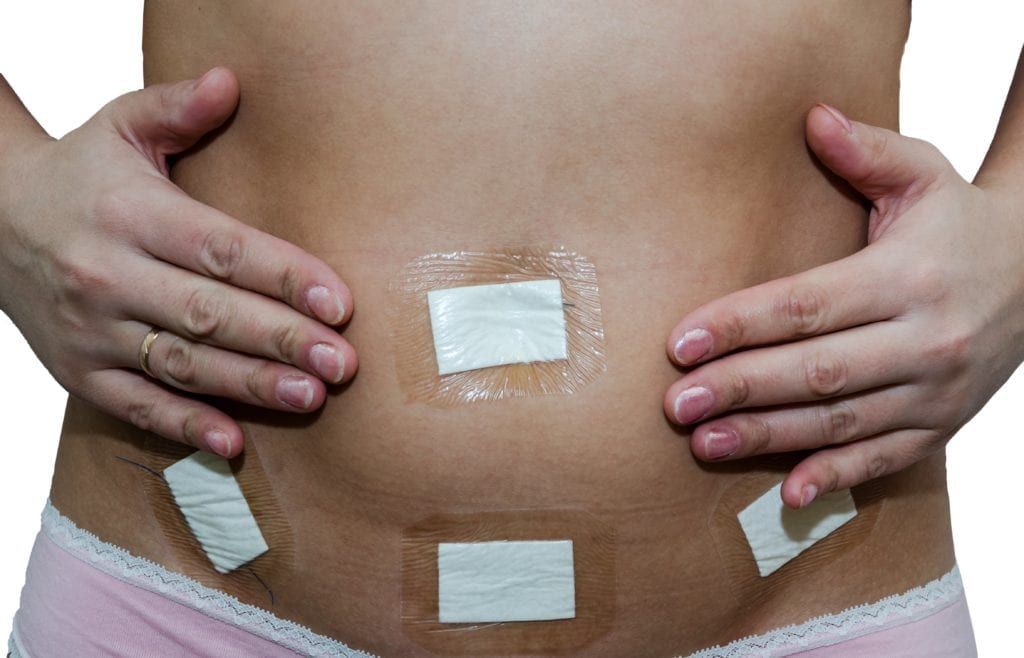Having surgery is scary, even if it is a minimally-invasive procedure. Oftentimes, it’s not only the surgery itself people are concerned about, but the recovery period as well. While minimally-invasive gynecological surgery has the benefit of a faster and easier recovery than traditional open surgery, many women still have questions about the recovery process and what they should expect after surgery. Here are some of the most commonly asked questions regarding the recovery process, as well as some information on what to expect after having minimally-invasive gynecological surgery:
Q: How many incisions can I expect after minimally-invasive gynecological surgery?

A: One of the main benefits of using a minimally invasive approach is that the size of the incision will be greatly reduced when compared to incisions used for open surgery. However, while these incisions are much smaller, there may be approximately 3-5 tiny incisions. In most cases, these incisions are about 5mm across, which is roughly the size of a pencil eraser. Not only do smaller incisions heal faster, but they leave smaller and less noticeable scars.
Q: Do minimally-invasive procedures require a hospital stay?
A: In most cases, minimally-invasive surgical procedures are performed on an outpatient basis. This means that you will arrive at a hospital or surgery center for the procedure, spend about an hour or two in recovery, and then be discharged to recover in the comfort of your own home. Returning home after surgery lowers your risk of blood clots or contracting an infection from the hospital. However, there are some cases where your doctor may recommend staying a night or two in the hospital.
Q: When can I leave the hospital after surgery?
A: As mentioned above, most patients who have minimally-invasive surgery can leave the hospital after surgery. However, you will need to accomplish three things before being discharged. After surgery, you can leave the hospital once you can walk without assistance, are comfortable with pain medications, and can drink liquids without significant nausea.
Q: Can I drive after having minimally-invasive surgery?
A: No, you will need to have a driver take you home after surgery. Although minimally-invasive surgery is less stressful on your body than traditional open surgery, it is still important to let your body rest immediately after surgery. Additionally, it is not safe to drive after using the anesthetic and sedation used during minimally invasive-procedures.

Q: What can I expect in the days immediately following surgery?
A: In the days immediately following surgery, you can expect to experience some discomfort and possible swelling. To manage any postoperative discomfort, your doctor will prescribe pain medications, as well as medications to reduce inflammation. The good news is that minimally-invasive techniques minimize the trauma to the surrounding tissues and muscles, so any discomfort should resolve relatively quickly. Still, it is recommended to take it easy for the first few days after surgery.
Q: How long until I can return to my usual routine?
A: Most women are able to return to work within 1-3 weeks after their surgery. However, you will need to avoid lifting heavy objects or strenuous activities for at least six weeks after surgery to give your body a chance to heal completely. With the exception of heavy lifting or strenuous activities, most women return to a normal routine within two weeks following surgery.

Dr. Geoffrey Zann is a Certified Robotic Da Vinci Surgeon, Board-certified by the American College of Obstetricians and Gynecologists, and a Diplomat of the American Board Obstetrics of Gynecology. He has been a member of the American Society for Colposcopy and Cervical Pathology, American Association of Gynecologic Laparoscopists, and the Hugh R. K. Barber Obstetric and Gynecologic Society.
